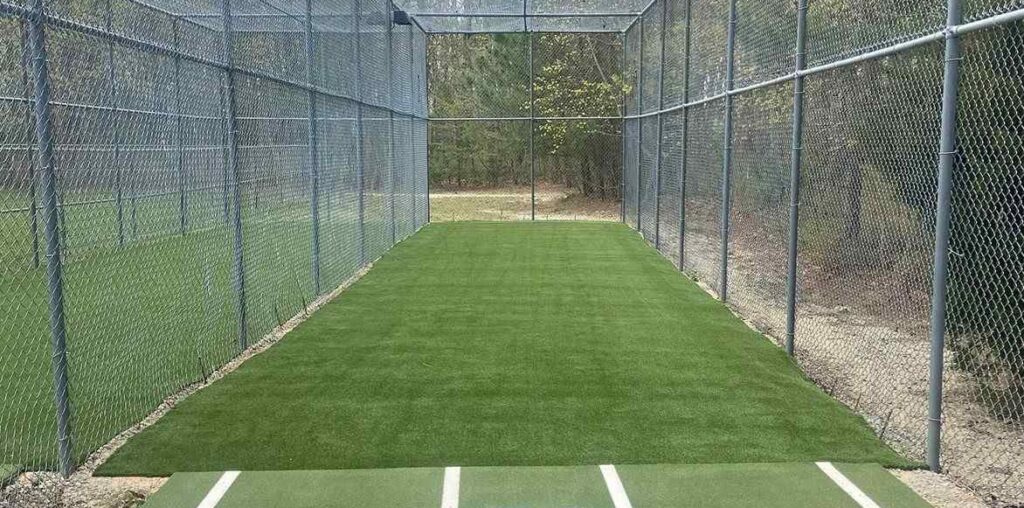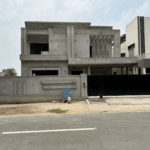In recent years, homeowners, property managers, and even cities across the United States have been making a noticeable switch — moving away from natural grass and choosing modern turf instead. This shift isn’t just a style choice. It’s a response to rising water costs, busy lifestyles, and the need for long-term, low-maintenance landscaping solutions. With modern turf becoming more realistic, durable, and environmentally friendly, it’s no surprise that more people are asking: Why keep struggling with natural grass when a better alternative exists?
What Is Modern Turf?
Modern turf, also known as artificial grass or synthetic turf, is a man-made surface designed to look and feel like real grass. It’s made from plastic materials like polyethylene or polypropylene, shaped into soft blades, and attached to a strong backing. Over the years, this turf has evolved with better colors, textures, and even cooling features to closely mimic the look of a healthy lawn.
Unlike older versions that looked shiny or felt rough, today’s modern turf comes in different shades of green, with mixed blade lengths and even brown thatch to make it appear more like real grass found in different parts of the U.S.
Why More Americans Are Replacing Grass With Turf
Water Conservation
One of the biggest reasons people are choosing modern turf is the need to save water. Traditional lawns use thousands of gallons of water each month, especially in dry or hot climates. In states like California, where droughts are common and water bills are rising, turf has become a smart, eco-friendly alternative. Turf doesn’t need watering, other than a rinse to clean it off once in a while.
Less Maintenance Year-Round
Modern life is busy. Not everyone has time for mowing, edging, fertilizing, and pulling weeds. Real grass requires regular attention, but modern turf eliminates most of these chores. Once it’s installed, you won’t need a lawn mower, sprinkler system, or expensive landscaping service. Just an occasional brush and rinse will do the job. This low-maintenance benefit is one of the main reasons people are making the change.
Long-Term Cost Savings
Although installing modern turf costs more upfront, it becomes cheaper over time. You’ll save money on water, lawn tools, fuel, lawn treatments, and weekly maintenance. Many homeowners find that the total savings make up for the initial cost within just a few years. That’s why it’s often viewed as a long-term investment.
Looks Great All Year
Natural grass turns brown in the summer, patchy in the winter, and can be damaged by heavy foot traffic or pets. Modern turf stays green and fresh-looking every day of the year. Whether it’s a rainy spring or a dry fall, your yard always looks ready for outdoor fun or relaxing evenings on the patio.
Great for Kids and Pets
Many families choose modern turf because it’s clean, safe, and durable. It creates a soft surface for kids to play on, without the mud, bugs, or itchy grass stains. Dog owners love that it holds up well against digging and doesn’t attract pests like fleas or ticks. It’s easy to clean and doesn’t wear down like natural grass does in high-traffic areas.
Perfect for Urban Homes and Small Spaces
In cities where outdoor space is limited, modern turf is a practical solution. Tiny yards, balconies, rooftops, and side yards can be hard to manage with real grass. Turf works well in these areas, bringing the look of greenery without the hassle of soil, shade problems, or irrigation systems.
Common Places Where Turf Is Used
Modern turf isn’t just for front yards or backyards. It’s being used in more and more settings, including rooftops, patios, playgrounds, dog runs, sports fields, public parks, and even highway medians. Schools use it for safe, clean play areas, and businesses install it to create tidy landscaping that doesn’t need constant care.
You’ll also see turf around pools, along walking paths, and in drought-prone communities where traditional grass can’t survive. As turf gets better in quality and more affordable, it continues to show up in more places across the country.
Putting Green Installation Reviews
For many golf enthusiasts and homeowners looking to add something unique to their backyard, installing a putting green has become a popular choice. Putting green installation reviews indicate that these synthetic golf greens offer several benefits. Not only do they mimic the look and feel of a real golf course, but they also provide a low-maintenance alternative for golf lovers.
Unlike traditional grass that requires frequent watering and mowing, synthetic putting greens stay perfectly manicured year-round. Many putting green installers even provide a custom installation, adjusting the layout to your space and specific needs. Reviews often highlight the ease of installation, with many homeowners praising how quickly they can transform their yard into a miniature golf course. If you’re considering a backyard putting green installation, reading customer reviews can provide valuable insights into the types of turf materials used, installation costs, and long-term satisfaction with the product.
How Turf Has Improved Over the Years
Older types of turf were easy to spot. They looked fake, felt rough, and got dangerously hot in the sun. But those days are gone. Today’s turf includes new features like heat-blocking technology, soft-touch fibers, and realistic designs with varied blade heights and natural-looking colors.
The backing material is now stronger and better at draining water quickly, so there are no puddles or soggy spots. Some turf products are even made using recycled materials and are designed to be recyclable after 15 to 20 years of use. These improvements make turf not just more comfortable, but also more environmentally responsible.
Fake Grass Installation
When it comes to fake grass installation, homeowners and businesses are increasingly opting for this low-maintenance option. Whether you’re replacing your lawn with synthetic grass or installing it in a decorative space, the process has become much simpler over the years. Fake grass installation allows you to enjoy a beautiful, green yard or lawn without worrying about the environmental impact, cost of water, or the hassle of regular upkeep.
From front yards to playgrounds, and even sports fields, fake grass installation offers a practical solution for areas that need a durable, water-saving, and aesthetically pleasing surface. While the initial investment may be higher than natural grass, the long-term savings and ease of care make it a worthy choice for many homeowners.
For those considering fake grass for yard projects, professional installers can help guide you through the steps. They’ll assess the area, prepare the ground, and ensure proper drainage to avoid any water pooling. The benefits of artificial turf installation in high-traffic areas are apparent as it can handle heavy use without losing its shape or vibrancy, something natural grass just can’t match.
Is Modern Turf Safe?
Yes, today’s turf products are generally very safe. Reputable turf brands in the U.S. are free from lead and other harmful chemicals. Many of them are also UV-resistant, so they don’t break down or release fumes in the sun. If you’re installing turf for children or pets, it’s always good to ask for a safety certificate or material list from the supplier.
In terms of heat, while turf can still get warmer than grass in full sun, some newer types are designed with cooling infill or reflective materials that reduce surface temperature. Placing turf in shaded areas or using umbrellas and trees for cover can also help manage the heat.
How Long Does Turf Last?
Most high-quality turf lasts between 15 to 20 years, depending on how much foot traffic it gets and how well it’s maintained. For residential use, where the turf isn’t walked on constantly, it can last even longer. Good installation and proper drainage also make a big difference in how long the turf holds up.
Is Turf Better for the Environment?
This is a common concern, and the answer depends on what you’re comparing. Turf is made from plastic, which doesn’t break down like organic materials. But it also eliminates the need for water, fertilizers, pesticides, and gas-powered lawn tools — all of which have harmful effects on the environment. In many ways, modern turf is a greener option, especially in areas where water is scarce or pollution from lawn care is high.
More turf products are now being made with recycled content and designed to be recyclable at the end of their lifespan, which helps reduce plastic waste. When you look at the bigger picture, turf can be an environmentally conscious choice, particularly in drought-prone and urban areas.
Choosing the Right Turf for Your Space
If you’re thinking about switching to turf, it’s worth taking a little time to choose the right kind for your space. Some turf types are better for soft play areas, while others are made for high-traffic paths or pet runs. Think about how the space will be used — whether it’s mainly for looks, lounging, or playing — and pick a turf type that matches that use.
You should also check how well the turf drains water, especially if your area gets a lot of rain. Good drainage prevents mold, puddles, and bad smells. Finally, consider the color and texture. Some turf blends in better with certain types of soil, stone, or siding, giving a more natural look to your yard.
Final Thoughts
The growing popularity of modern turf isn’t just about how it looks — it’s about what it solves. In a world where people want less maintenance, lower water bills, and more usable outdoor space, turf is proving to be a reliable option. It meets the needs of busy families, pet owners, urban residents, and anyone who wants a clean, green space without the stress of constant yard work.
As water conservation becomes more important and turf technology continues to improve, it’s clear why so many people are making the switch. Modern turf offers a smart, long-lasting, and eco-friendly solution for the modern American yard.


